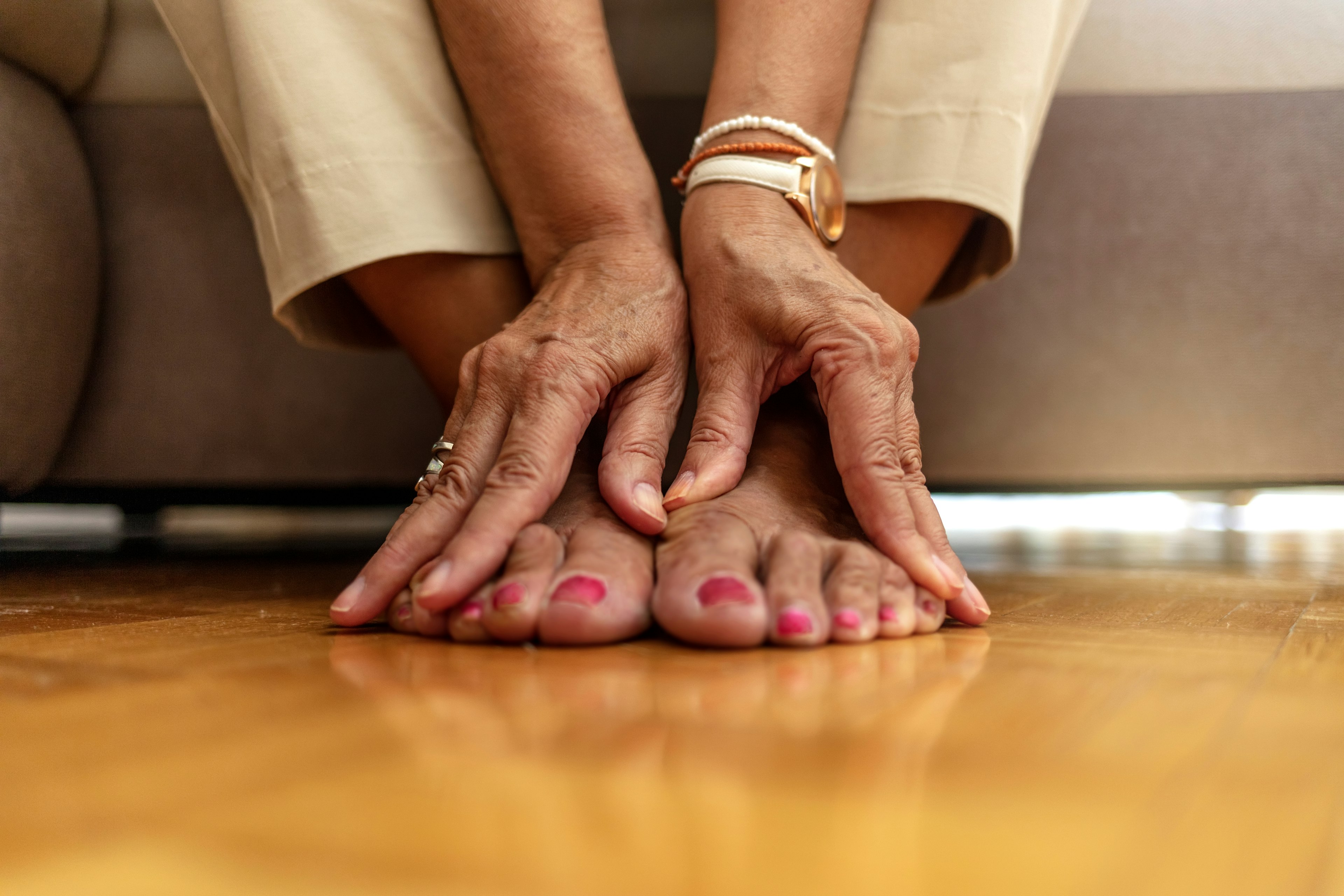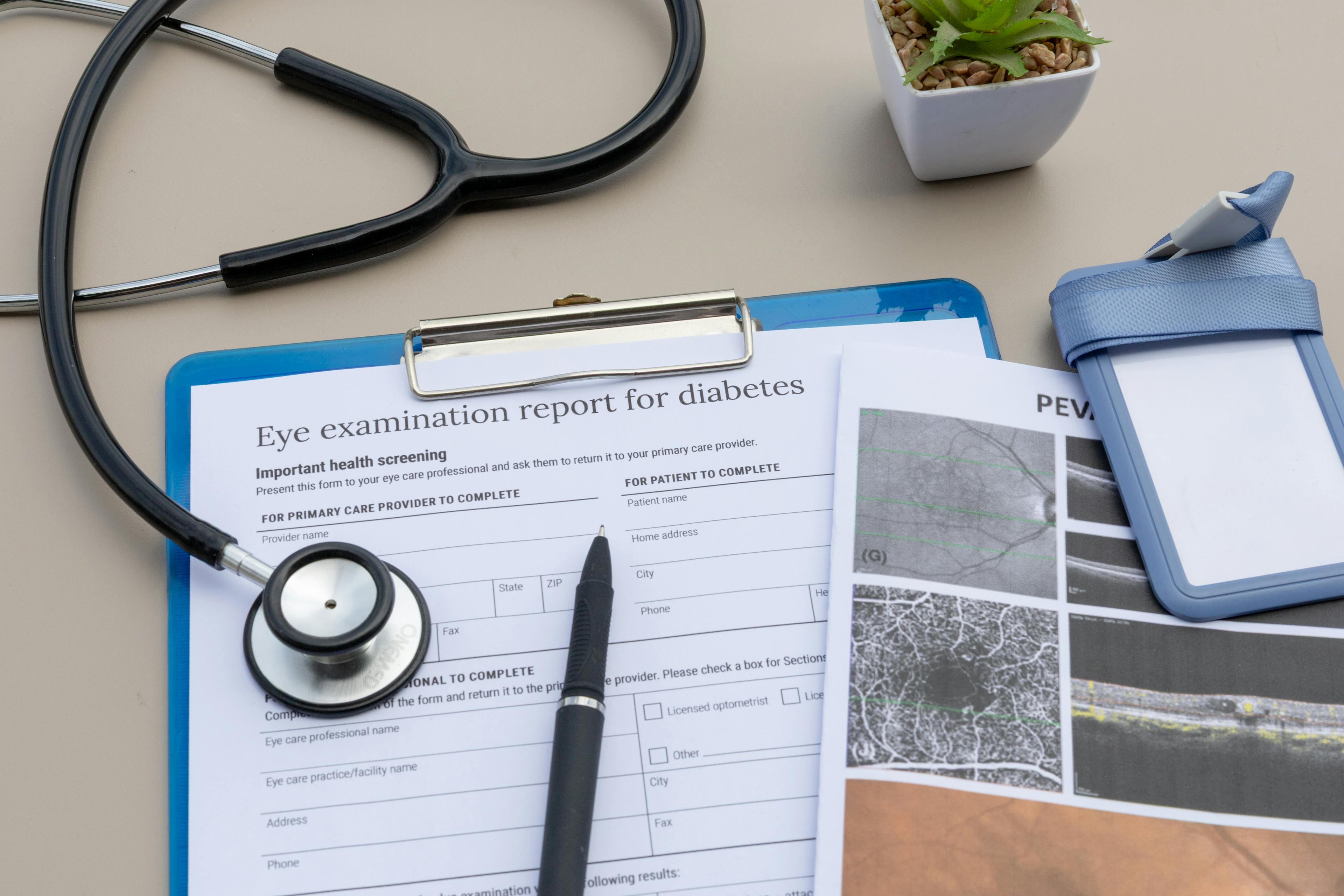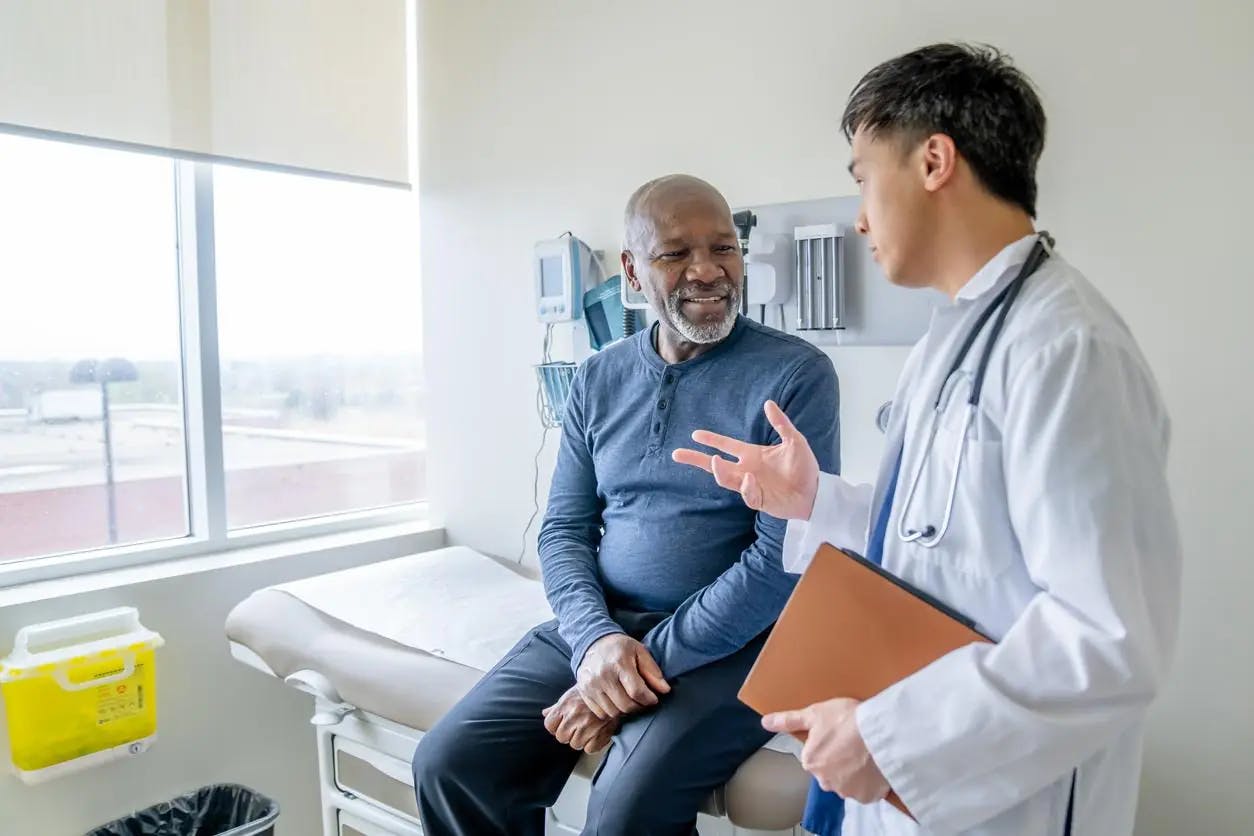Key Takeaways
Aging feet are more prone to pain, injuries, and balance issues due to changes in skin, circulation, and joint structure.
Preventative care like wearing supportive shoes, practicing daily hygiene, and doing gentle exercises help maintain comfort and mobility.
Routine podiatry visits and the use of orthotics, adaptive footwear, and compression socks support long-term foot health and reduce the risk of complications.
As we age, caring for our feet becomes increasingly important. Our feet serve as the body’s foundation, and their condition directly impacts our ability to stay mobile, independent, and engaged in everyday life.
With aging come physiological changes such as reduced circulation, decreased joint flexibility, and thinner skin. These changes can heighten the risk of foot discomfort, injuries, and chronic conditions.
Let’s discuss key foot health challenges that older adults may encounter, along with preventive strategies, treatment approaches, and practical care tips to help maintain foot health and overall well-being.
How Your Feet Change with Age
Physical Changes Over Time
Aging often leads to a decline in natural fat cushioning, lowered arches, and more delicate skin. These physical changes affect balance, reduce shock absorption, and increase the likelihood of pressure points, soreness, and skin breakdown caused by friction.
Supporting Circulation and Nerve Health
As we age, changes in circulation and nerve sensitivity are common. Staying proactive with regular foot checks and healthy habits can help support healing, reduce the risk of unnoticed injuries, and maintain sensitivity to temperature and pressure. With the right care, it’s possible to catch concerns early and keep feet feeling their best.
Proactive Steps to Maintain Foot Health in Older Adults
Selecting Supportive Footwear
Wearing well-fitting, supportive shoes is one of the most effective ways to avoid foot problems. Choose shoes with shock-absorbing soles, slip-resistant bottoms, and a roomy toe area. The right footwear can adapt to swelling, changing foot shapes, and sensitive joints.
Performing Routine Foot Inspections
Frequent self-checks or caregiver-assisted exams help identify early signs of skin damage, swelling, cuts, or infections. Regular monitoring is especially important for those with reduced sensation or compromised circulation.
How to Care for Your Feet: Establish a Daily Foot Care Routine
- Clean and dry feet thoroughly, especially between the toes
- Use a gentle, fragrance-free lotion to keep skin soft and prevent cracks
- Trim toenails straight across to reduce the risk of ingrown nails
- Wear shoes or slippers indoors to protect against injuries and infection
Common Foot Problems Among Seniors
Foot and Ankle Arthritis
Arthritis is a common cause of foot and ankle discomfort in older adults. It often leads to stiffness, swelling, and decreased mobility. Treatment may include anti-inflammatory medications, physical therapy, and supportive footwear that relieves joint stress.
Diabetic Foot Concerns
Seniors with diabetes face an elevated risk of foot ulcers, infections, and delayed wound healing. Managing blood sugar levels, scheduling routine foot exams, and using diabetic-specific footwear can help prevent complications. Any minor injuries should receive immediate attention.
Corns, Calluses, and Bunions
Shoes that cause pressure or friction can lead to corns, calluses, or bunions. These conditions may be managed with shoe modifications, cushioning, or professional treatment to alleviate discomfort and prevent worsening.
Keeping Feet Strong Through Exercise and Stretching
The Role of Physical Activity
Staying active supports circulation, maintains joint flexibility, and helps preserve muscle strength. Gentle activities such as walking, swimming, or yoga can enhance movement and reduce foot and ankle stiffness.
Effective Stretching Practices
Incorporating stretching into a daily routine helps keep joints limber and reduces tightness in the feet. Try these movements:
- Toe curls and extensions
- Ankle circles
- Calf and plantar fascia stretches are performed against a wall or step
When to See a Podiatrist
Benefits of Routine Podiatry Visits
Regular visits to a podiatry clinic help identify structural changes, skin conditions, and other potential risks early. Preventive care provides personalized strategies to maintain comfort and reduce the chance of complications.
Dealing with Ongoing Pain
Persistent foot pain may result from nerve compression, joint deterioration, or poor alignment. A podiatrist can diagnose the cause and recommend targeted treatment, such as orthotics, therapy, or medication.
Tools and Footwear Innovations for Senior Needs
Orthotics and Shoe Inserts
Supportive insoles or custom orthotics can relieve pressure and improve foot alignment. These tools are especially helpful for conditions like arthritis, fallen arches, or plantar fasciitis, and are compatible with most enclosed shoes.
Footwear Tailored to Seniors
Adaptive footwear options for older adults often include wide openings, adjustable closures, and non-slip soles. These features accommodate swelling, restricted mobility, and foot deformities such as bunions or hammertoes.
Managing Foot and Leg Swelling
Understanding Edema
Swelling in the lower legs and feet, known as edema, can occur due to poor circulation, extended sitting, medication side effects, or health conditions like heart or kidney disease. It can cause discomfort and make shoes harder to wear.
Tips to Alleviate Swelling
- Elevate legs multiple times per day
- Wear compression socks as directed by a healthcare provider
- Stay physically active to improve circulation
- Reduce sodium intake and maintain proper hydration
Skin Care Considerations for Aging Feet
Daily Moisture and Cleanliness
With age, skin naturally becomes more delicate and may need a little extra attention. Keeping feet clean, dry, and moisturized with a gentle lotion can help prevent dryness, irritation, and infection. A simple daily routine goes a long way in keeping skin healthy, comfortable, and resilient.
Watch for Skin Changes
Look for unusual spots, ulcers, discoloration, or growths. Any concerning changes should be evaluated by a healthcare professional to rule out infections or signs of skin cancer.
Keep Moving with Confidence — Prioritize Your Foot Health Today
Healthy feet are key to staying active, independent, and pain-free. With the right daily care, supportive footwear, and guidance from a podiatrist, you can stay mobile and enjoy life to the fullest. Schedule a foot health appointment today to take the next step toward lasting comfort and confidence.





